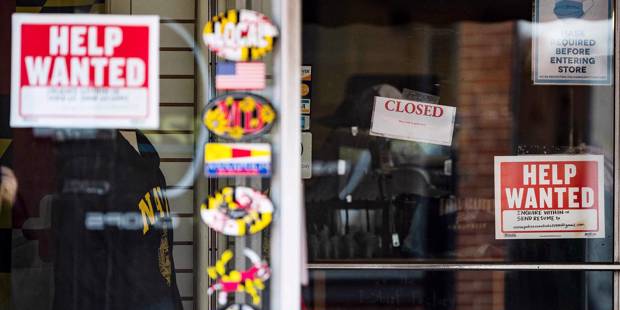Should the Fed raise interest rates fast? Or should it leave them alone, figuring inflation will be "transitory?"
Lots of models, including ones I play with, predict that a constant unchanging interest-rate peg leads to stable inflation. If there is a fiscal shock, it leads to a one-period price-level jump, but no further inflation, so long as the interest rate stays where it is. The models in the first few chapters of The Fiscal Theory of the Price Level have this feature, also "Michelson Morley, Fisher and Occam.'' Martin Uribe has also written about this issue, here for example.
The simplest example is \[i_t = E_t \pi_{t+1}\] \[(E_{t+1}-E_t) \pi_{t+1} = -(E_{t+1}-E_t) \sum_{j=0}^{\infty} \rho^j \tilde{s}_{t+j} \] where \(\tilde{s}\) denotes real primary surpluses scaled by the value of debt. If the interest rate \(i_t\) does not move, expected inflation does not move. A fiscal shock (negative \(\tilde{s}\) ) gives a one-period unexpected inflation, devaluing outstanding debt; essentially a Lucas-Stokey state-contingent default. Sticky prices smooth all this out over a year or two.
You can replace the latter with standard new-Keynesian equilibrium-selection rules if you want. This isn't really about fiscal theory; the key is rational forward-looking expectations in the first equation, which also hold in the standard sticky-price extensions. This "Fisherian" property is a common though widely ignored prediction of most new-Keynesian models.
It certainly seems plausible that we are seeing an inflationary fiscal shock, from trillions of money printed up and sent to consumers, while interest rates stay fixed. These models predict that such inflation will indeed be transitory if the Fed does not raise interest rates, and will rise if it does!
However, like all lower-rates-to-lower-inflation arguments, there are lots of warnings here. In particular, the "transitory" inflation could last a long time once we put in sticky prices. The trick only works if the Fed is completely committed to not raising rates, to waiting as long as it takes for inflation to settle back down on its own. If people suspect the Fed will raise rates, inflation rises. There are lots of temporary forces that go in the other direction. And there may be more fiscal shocks -- I sort of see one brewing in Congress -- so we may not be done with the unexpected inflation term.
FTPL section 5.3 has a long discussion of all the preconditions for lower interest rates to bring down inflation, which still obtain. But we haven't been talking about this issue much since the low-inflation zero-bound era ended, and the discussion that maybe determined, permanent, pre-announced interest rate rises could eventually bring up inflation. The opposite sign works as well.
In these models, with a few more ingredients than I show above, the Fed can also lower inflation by raising rates. Raising rates gives a temporary inflation decline before going the other way. So, the Fed has to raise rates, push inflation down, then quickly get on the other side. That's the historical pattern, and what it will likely do. But it's only honest, and fun, to remember the prediction of the opposite possibility and to think about how it might work out.
******
Update. A second try, with more English. The government, Fed and Treasury, basically printed up about $5 trillion of new cash and treasury debt -- these are largely perfect substitutes so the composition doesn't really matter -- with no change at all in plans to repay debt. By simple FTPL, a 25% increase in debt with no increase in expected future surpluses generates a 25% rise in the price level, 25% cumulative inflation. It basically defaults on outstanding debt and transfers that value to the recipients of stimulus.
But then it ends. If there is no more issue of nominal debt, without additional surpluses, then there is no more inflation.
Additional issues of nominal debt can come from more unbacked fiscal expansion, or it can come from monetary policy. Monetary policy also puts extra government debt (same thing as interest-paying reserves) out there, with (of course) no change in fiscal policy.
So there is the FTPL case for "transitory."In the long run, no change in interest rate puts no extra government debt in the system, and higher nominal interest rates must mean eventually higher inflation and hence more unbacked government debt in the system.
